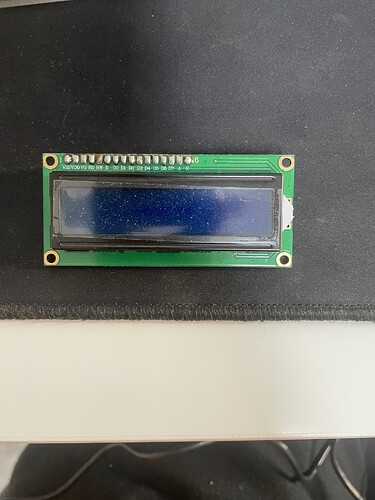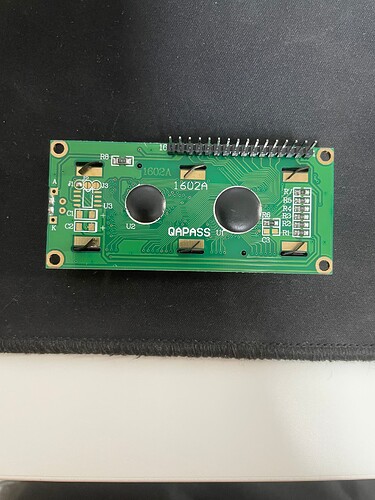I have a code that is used for detecting movement behind walls. It uses a DMS (Digital Microwave Sensor). The blueprint I use used a OLED Display and Arduino Nano, I only have a LCD Display and an Arduino Uno. I don't even know if the type of Arduino matters in any way, but I don't know how I should change the code for the different type of display that I have.
For convenience the website I found this project on is: "Electronic Clinic, microwave sensor with arduino for humans and objects detection behind walls."
Here's the Code:
#include <SPI.h>
#include <MsTimer2.h> //Timer interrupt function library
#include <Adafruit_GFX.h>
#include <Adafruit_SSD1306.h>
#define SCREEN_WIDTH 128 // OLED display width, in pixels
#define SCREEN_HEIGHT 64 // OLED display height, in pixels
// Declaration for an SSD1306 display connected to I2C (SDA, SCL pins)
#define OLED_RESET -1 // Reset pin # (or -1 if sharing Arduino reset pin)
#define SCREEN_ADDRESS 0x3D
Adafruit_SSD1306 display(SCREEN_WIDTH, SCREEN_HEIGHT, &Wire, OLED_RESET);
int pbIn = 0; // Define interrupt 0 that is digital pin 2
int ledOut = 13; // Define the indicator LED pin digital pin 13
int number=0; //Interrupt times
volatile int state = LOW; // Defines the indicator LED state, the default is not bright
void setup()
{
Serial.begin(9600);
pinMode(ledOut, OUTPUT);//
attachInterrupt(pbIn, stateChange, FALLING); // Set the interrupt function, interrupt pin is digital pin D2,
//interrupt service function is stateChange (),
//when the D2 power change from high to low , the trigger interrupt.
MsTimer2::set(3000, Handle); // Set the timer interrupt function, running once Handle() function per 1000ms
MsTimer2::start();//Start timer interrupt function
display.begin(SSD1306_SWITCHCAPVCC, 0x3C);
display.clearDisplay();
display.display();
}
void loop()
{
display.setTextSize(2);
display.setTextColor(WHITE);
display.setCursor(0,5);
display.println("status: ");
display.setTextSize(3);
display.setTextColor(WHITE);
display.setCursor(0,30);
display.println(number);
display.display();
display.clearDisplay();
delay(10);
}
void stateChange() //Interrupt service function
{
number++; //Interrupted once, the number + 1
}
void Handle() //Timer service function
{
number = 0;
}
I'd greatly appreciate if someone could help me with this.
KoenV.

